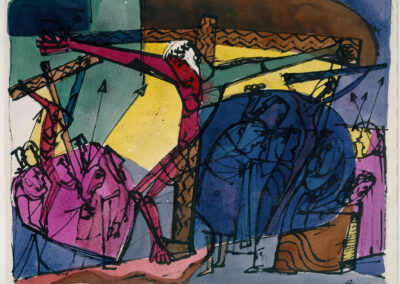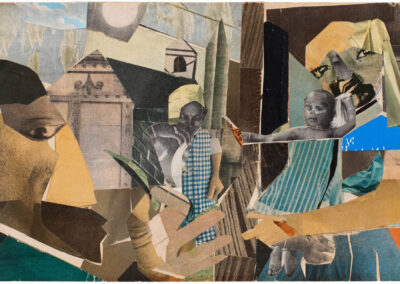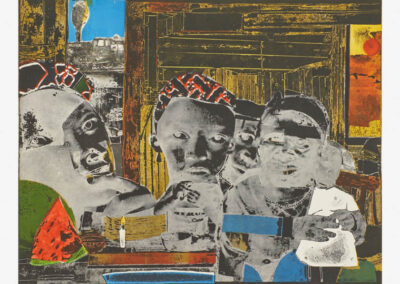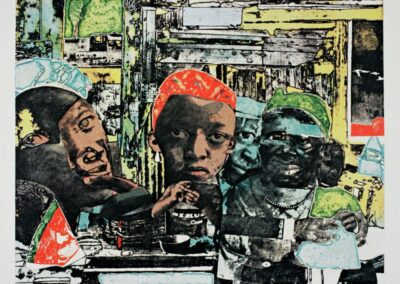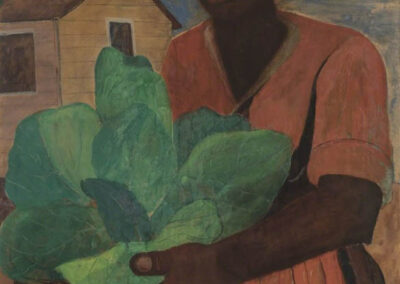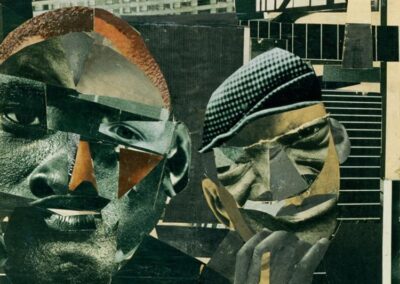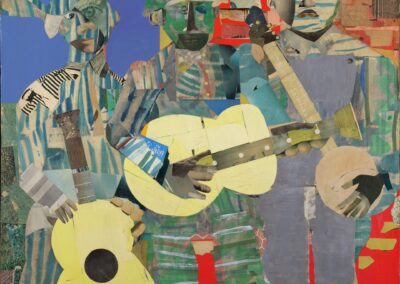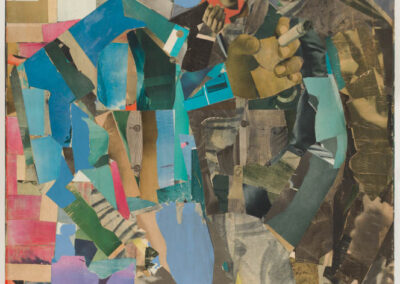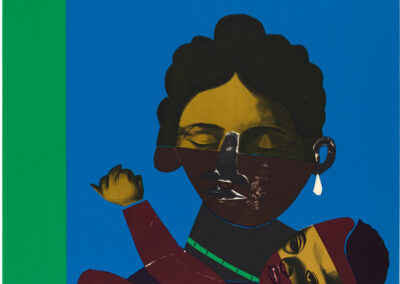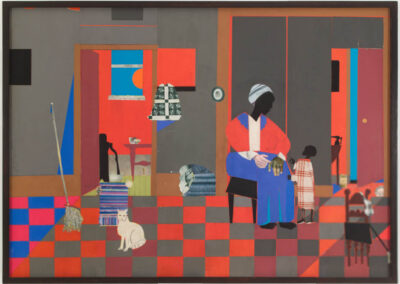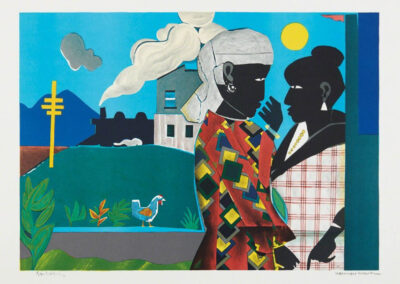Our next Artist You Need To Know once said “Artists have this desire for a vision of the world…There’s some painting someplace that’s not in a museum and it’s your idea as a painter to put that one thing that is missing there.”
Romare Bearden (1911 – 1988) was an African American artist, activist, songwriter and author. He is “often considered one of the most important American artists of the 20th century…Romare Bearden’s artwork depicted the African American culture and experience in creative and thought-provoking ways.. his early works were realistic images, often with religious themes. He later transitioned to abstract and Cubist style paintings in oil and watercolor. He is best known for his photomontage compositions made from torn images of popular magazines and assembled into visually powerful statements on African American life.” (from here)
-
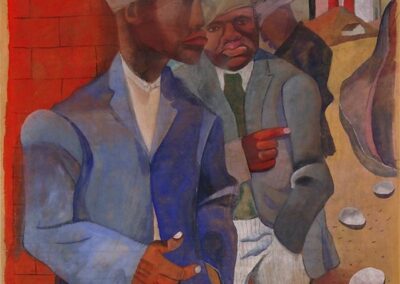
Factory Workers, 1942
-

Golgotha, 1945
-

La Primavera, 1964
-

Mysteries from Prevalence of Ritual, 1964
-

Carolina Blue, 1969
-

The Train, 1975
Bearden was born in Charlotte, North Caroline, but his family relocated to Harlem, New York, in 1914. He grew up there and in Pittsburgh, Pennsylvania. Bearden graduated from New York University in 1935, but also served with the US Army during World War II in Europe (he often commented that in his artwork he strove “to express the humanity he felt was lacking in the world after his experience” in the military). Later, in 1950, he would return to Paris and at the Sorbonne studied art history and philosophy.
His parents’ household in Harlem “became a social and intellectual hub for luminaries of the Harlem Renaissance, visited by the likes of Duke Ellington and Langston Hughes. From 1935 until 1937, Bearden was employed as a cartoonist for the Baltimore publication Afro-American, but for most of his life he worked as a social worker in New York, making art in his free time. A founding member of the Harlem Cultural Council and Black Academy of Arts, Bearden was elected to the National Institute of Arts and Letters in 1972. The artist received the Mayor’s Award of Honor for Art and Culture in New York in 1984 and the National Medal of Arts in 1987. In 2013, his hometown of Charlotte dedicated a city park in honor of Bearden’s legacy. Today, the artist’s works are held in the collections of the Metropolitan Museum of Art in New York, the Museum of Fine Arts in Boston, the Art Institute of Chicago, and the Philadelphia Museum of Art, among others.” (From artnet, where you can also see many more of Bearden’s images)
-

Untitled (Harvesting Tobacco), c.1940
-

Pittsburgh Memory, 1964
-

Three Folk Musicians, 1967
-

Three Men, 1966-1967
-

Mother and Child, 1971
-

Slave Ship, 1972
The majority of Bearden’s early works were concerned with a sense of unity and cooperation in the African – American community: described by the New York Times (in his obituary in 1988) as ‘the nation’s foremost collagist’, he once asserted that “It is not my aim to paint about the Negro in America in terms of propaganda … [but] the life of my people as I know it, passionately and dispassionately as Breughel. My intention is to reveal through pictorial complexities the life I know.”
In the 1950s, Bearden experimented with abstraction, but found himself returning to his more narrative works. He was a founding member of the Harlem-based art group known as The Spiral, which was composed of like minded artists in various mediums, focused upon “the responsibility of the African-American artist in the civil rights movement.”
-

Martin Luther King Jr. - Mountaintop, 1968
-

Early Carolina Morning, 1978
-

Conjunction, 1979
-

The Conversation, 1979
-

Alto Saxophone, ca. 1982
-

Jazz II Deluxe, 1980
Romare Bearden also had strong commitment to supporting both young and emerging artists, and he and his wife Nanete Rohan Bearden created the Bearden Foundation, for this purpose. You can see more of Bearden’s work, and learn more about how his art was an interwoven narrative of his life and that of his community at The Art Story, The Smithsonian American Art Museum, and Biography.

